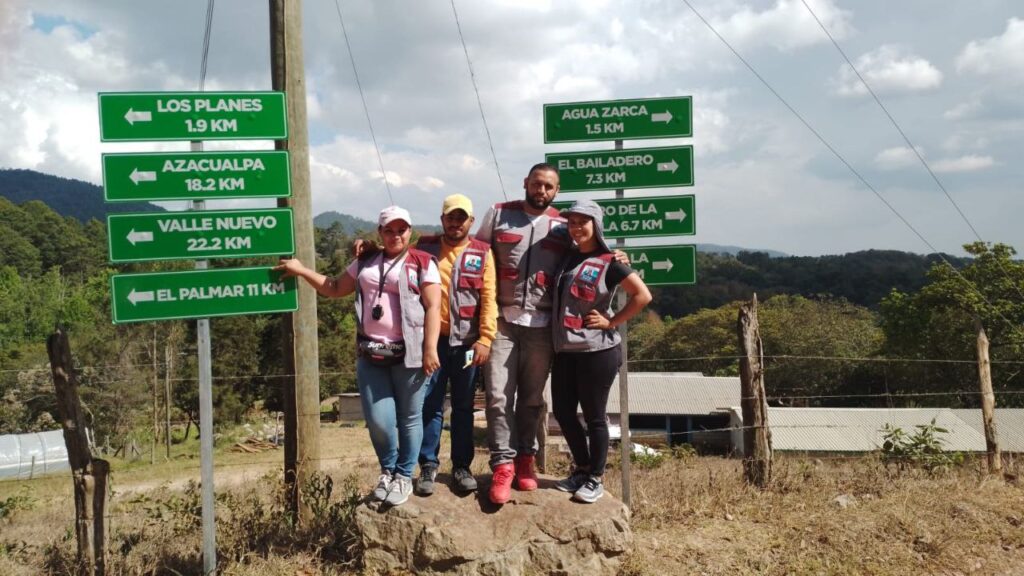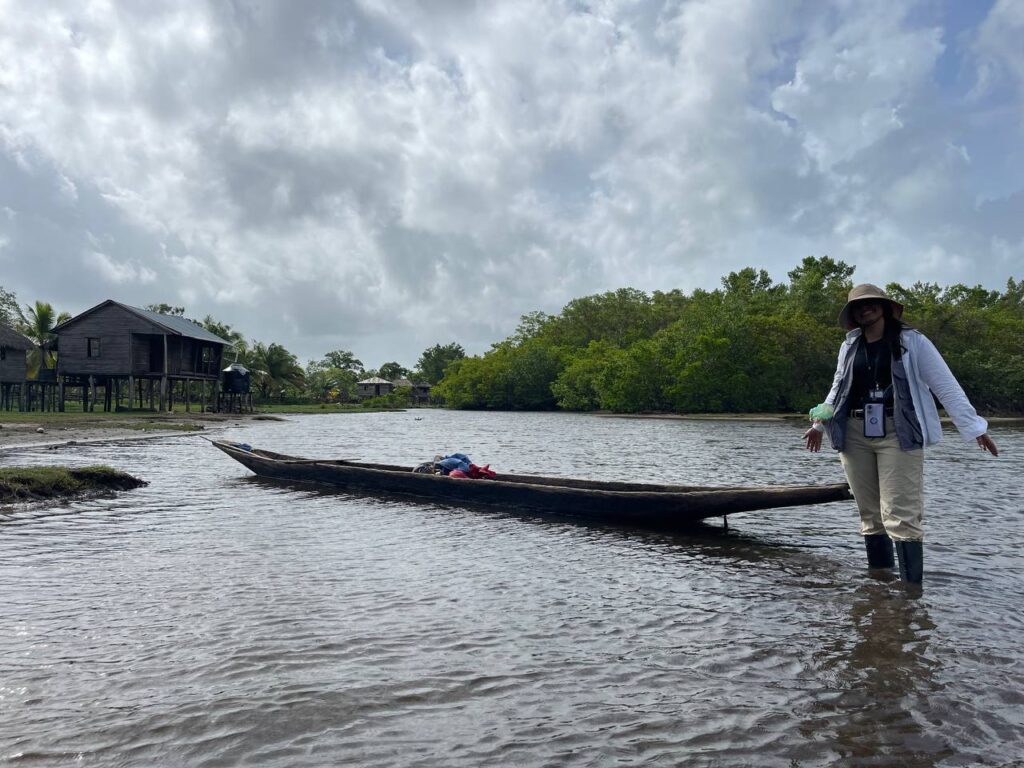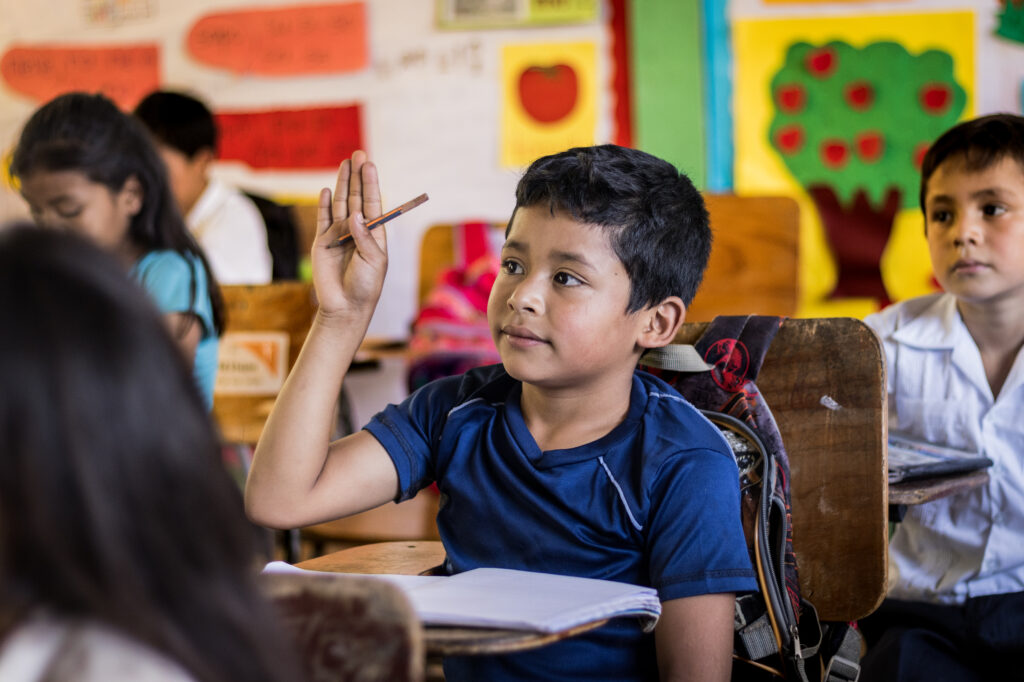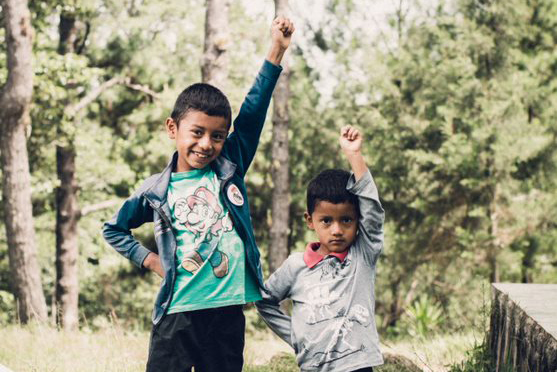In early 2023, we shared that World Vision’s Bright Futures project was undertaking an ambitious task: conducting a nationwide survey on child labor in Honduras. The goal was to have a complete picture of where child labor was going unnoticed and how the project could focus its efforts to reach every family—even those in the most remote areas of the country.
On June 12, 2024, World Day Against Child Labor, World Vision joined with our project partners (the National Institute of Statistics, the Ministry of Labor and Social Security, the International Labor Organization, and the Ministry of Children, Adolescents and Family) to present the results to the world.
The results are an urgent call to action to increase efforts to reduce child labor in Honduras. We interviewed Allan Cruz, the deputy director of World Vision’s Bright Futures project (funded by the U.S. Department of Labor) to learn more about the outcome of the survey and what they mean for children in Honduras.
1. How is child labor defined for the purposes of the survey?
To conduct the survey, we had to have a very clear definition of child labor. We define child labor as:
- Any time a child under 14 engages in economic activities
- When a child engages in dangerous economic activities, whether the danger stems from the nature of the work or the work environment
- When a child performs household chores that are dangerous and/or carried out over such prolonged hours that they’re denied their rights
Of course, children often help with work around the house, but children should not be using dangerous tools, lifting heavy objects, or doing anything that could harm their physical or mental health—these things are considered child labor even if they’re done at home. And when household chores are done for such long hours that a child’s rights are violated, we also consider that child labor. For example, it’s normal for a 15-year-old girl to help care for younger siblings, but if she’s caring for them all day and not able to attend school, she’s being denied her right to an education and this counts as child labor.
Children ages 14 to 17 may work in economic activities with permission from the Secretary of Labor. But they must work a schedule that doesn’t include night shifts or shifts that interfere with school, and they should not work jobs that put them in dangerous situations. You can see why we had to be very specific in the survey to ensure we captured all forms of child labor, including the forms that often go unnoticed and therefore unaddressed.

Survey takers pause for a photo before they head out on their mission to survey families in remote areas of Honduras. (©2023 World Vision/INE)
2. This is the first national survey regarding child labor in Honduras. What were your motivations for this undertaking?
World Vision is always looking to address the underlying issues that cause harm to children such as poverty, lack of education, and abuse—child labor contributes to all these issues. But when we began to really study the problem through the Bright Futures project, we saw there was a gap: We knew child labor was a problem, but we didn’t have enough data we could rely on to fully understand the situation. This made it difficult to explain the scope of the issue and advocate for change.
Now that we have a completed, updated set of data, we are equipped to communicate the scope of the problem clearly and accurately, explain where child labor hides in society, and make informed policy recommendations. Good data makes our advocacy and our work infinitely more effective.
3. What were some of the biggest challenges in completing the survey?
There were a lot of challenges! But the biggest was probably reaching everyone we wanted to survey. To get the best data, we had to survey families in all 18 Honduran departments (like a U.S. state), including the hardest to reach like Gracias a Dios and Islas de la Bahía in northern Honduras. Gracias a Dios was the most challenging area to visit as it demanded surveyors travel to places without roads, including places only accessible by traveling through rain forests, across waterways, or via air travel. Part of the reason a survey like this had not been done before is because of the difficulty of reaching these areas.
The entire data collection process took about 60 days. Twenty teams reached 284 of the 298 municipalities in Honduras and collected information from over 25,000 households. We are so grateful to our dedicated survey-takers!

A World Vision staff member smiles for a photo before she takes a boat to reach remote families in La Mosquitia rainforest. (©2023 World Vision/Rolando Zavala)
4. What were some of the survey’s most compelling findings?
These were some of our top findings:
- Of the approximately 2.5 million children between 5 and 17 in Honduras, four out of every 10 are involved in child labor, either in economic activities or doing household chores that are either dangerous or done for excessive hours
- One in every five children (21.8%) who are engaged in economic activities work in dangerous conditions, work excessive hours, and/or work during the night.
- Almost one out of every three children (27%) between 5 and 17 years does household chores that are dangerous and/or done for excessive hours.
This information will be key in addressing child labor effectively and advocating for national support.
5. Were there findings that surprised you?
Yes. The survey found that 207,388 children are in child labor both because they are involved in economic activities with dangerous conditions and/or prolonged hours and involved in household chores in dangerous conditions and/or prolonged hours.
We were also astonished to find out the child labor rate in the department of Gracias a Dios is extremely high: 45.9%. Gracias a Dios is Honduras’ most remote department, much of it covered by the La Mosquitia Rainforest. Very few people travel to this area because of how difficult it is to access, and it is easy for child labor there to go unnoticed by the rest of the country. But now we know that almost half the children in Gracias a Dios are in child labor. This data will help us advocate for change for families in Gracias a Dios and across the country.

A boy raises his hand in school. Bright Futures wants all children to be able to access education and not be held back by child labor. (©2023 World Vision/Null Studio)
6. How will the results inform your efforts to end child labor?
We are sharing our findings across the country through our social media campaign, “For the first time we have data.” We are also planning events with central and local government authorities, national and international partners, and various producer associations who are fundamental in our efforts to eradicate child labor. Our aim in these efforts is to showcase the data and show how it can be used to create effective policies that protect our children.
“Whoever welcomes a little child like this in my name welcomes me.”
— Matthew 18:5
7. What impact do you hope the survey will have in Honduras?
We and all our partners responsible for the implementation of the survey (the National Institute of Statistics, the Ministry of Labor and Social Security, the Ministry of Children, Adolescents, and Family, and the International Labor Organization) are committed to ending child labor in Honduras. This means developing and putting into place effective public policies, intervention programs, and awareness campaigns to protect children and guarantee them a dignified future free of child labor.
Eradicating child labor is a big goal, but we are seeing change. We will continue to see change so long as we speak out for the right of every child to go to school, play, and be cared for and protected.
World Vision is grateful for the support of the Bureau of International Labor Affairs (ILAB) through the U.S. Department of Labor, which works to reduce exploitation, including child labor, globally so that the world can benefit from a safe, fair global economy.
Special thanks to Allan Cruz for the interview.
Funding is provided by the United States Department of Labor under cooperative agreement number IL-26259-14-75-K. 100% of the total costs of the project is financed with USG federal funds, for a total of $13 million dollars.



Augment your auto’s performance and style with our remarkable tuning services. Discover the genuine promise of your car through bespoke modifications. Our professionals of experts provides unrivaled quality and creativity. See our site https://precisionautobodyfrederick.com/ to discover supplementary, and initiate your journey towards driving brilliance today.
Enhance your machine with our unique customization services. Transform your car into a distinctive masterpiece. Our team of specialists is dedicated to offering superior results that exceed your expectations. Whether you’re looking to improve performance, refresh aesthetics, or include new features, we have the proficiency to supply your vision to life. Visit our website at https://timbrellosautobody.com/ to explore our products and schedule a consultation today.Let us guide you craft the auto of your dreams.
Enhance your machine into a showpiece with our experienced auto tuning packages. At Bergin Auto Body, we are experts in supplying premium modifications that showcase your one-of-a-kind flair. From elegant aerodynamic packages to powerful engine upgrades, our team guarantees exceptional craftsmanship. Check out our webpage https://berginautobody.com/ to explore our services and commence your ride’s change today.
HyperDrive is transforming the way data is stored and managed through decentralized storage and blockchain hosting solutions. Built for security, scalability, and efficiency, HyperDrive enables businesses, developers, and blockchain projects to store and distribute data without relying on centralized servers. By leveraging Web3 technology and distributed networks, HyperDrive ensures reliable, censorship-resistant, and high-performance storage solutions for the digital era. https://hyperdrive.ink
Struggling to lose weight? AquaSculpt is transforming weight loss with its natural, fast-acting capsules. Packed with proven AquaSculpt ingredients, these capsules burn fat, boost energy, and deliver real AquaSculpt results in weeks. Curious about AquaSculpt reviews? Users love its effectiveness and zero AquaSculpt side effects. Want to know AquaSculpt how to use? It’s simple—take daily and watch the pounds melt away. Ready to try? AquaSculpt buy now at http://aquasculpt.one and sculpt your dream body today!
Upgrade your automobile into a masterpiece with our experienced automobile upgrade packages. At Bergin Auto Services, we focus in delivering superior customizations that reflect your one-of-a-kind taste. From elegant car exteriors to high-performance performance boosts, our crew guarantees exceptional skill. Explore our internet page https://allisonsautobody.com/ to see our solutions and begin your car’s evolution right away.
discover here https://ringexchange.org/
Cytonic is revolutionizing blockchain security with advanced cybersecurity solutions tailored for Web3 applications. By integrating decentralized encryption, AI-powered threat detection, and smart contract auditing, Cytonic ensures maximum protection against cyber threats. Whether you’re securing DeFi protocols, NFTs, or enterprise blockchain systems, Cytonic’s cutting-edge security technology provides the highest level of data integrity and protection. https://cytonic.cc
Upshift Finance is a next-generation decentralized trading platform designed to provide secure, fast, and efficient crypto transactions. With smart contract automation, low transaction fees, and seamless integration with DeFi protocols, Upshift Finance empowers traders to swap digital assets and execute trades with maximum security. Whether you’re a beginner or an experienced trader, Upshift Finance offers a powerful, transparent, and user-friendly trading ecosystem. https://upshift.ink
Say hello to AquaSculpt—a game-changer in weight loss! These AquaSculpt capsules use natural AquaSculpt ingredients to shed pounds and boost confidence. No AquaSculpt side effects, just pure AquaSculpt results—see why in AquaSculpt reviews. Learn AquaSculpt how to use and join thousands who love it. AquaSculpt buy today at https://aquasculpt.one !
Struggling to lose weight? AquaSculpt is transforming weight loss with its natural, fast-acting capsules. Packed with proven AquaSculpt ingredients, these capsules burn fat, boost energy, and deliver real AquaSculpt results in weeks. Curious about AquaSculpt reviews? Users love its effectiveness and zero AquaSculpt side effects. Want to know AquaSculpt how to use? It’s simple—take daily and watch the pounds melt away. Ready to try? AquaSculpt buy now at https://aquasculpt.me and sculpt your dream body today!
Flaunch is the leading blockchain gaming launchpad, designed to help game developers and investors thrive in the Web3 gaming ecosystem. By offering secure token launches, NFT integrations, and decentralized crowdfunding, Flaunch enables game creators to fund, develop, and scale their projects with full transparency and community-driven support. Whether you’re a developer or an investor, Flaunch provides the tools to connect and grow in the blockchain gaming space. https://flaunch.tech
awesome